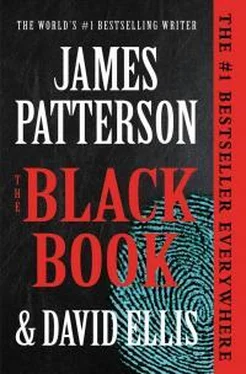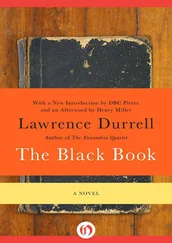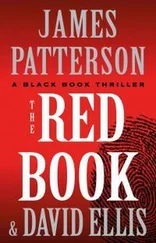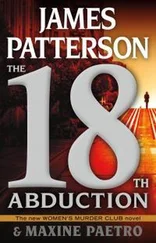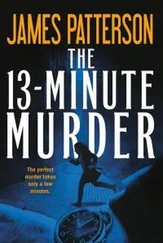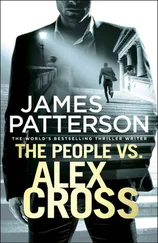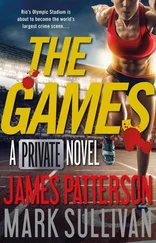The prosecutor nods. “Did you perform those tests on people’s exhibit 4, this knife?”
“Yes.”
“And what were the results?”
“I did confirm the presence of blood. And the blood was human.”
(There goes our theory that the knife was used in the ritual sacrifice of a billy goat.)
“Doctor, did you collect a sample of that blood for DNA testing?”
“Yes.”
“Did you also prepare a blood sample obtained from the victim, Ms. Ramona Dillavou, via search warrant for DNA testing?”
“I did.”
“Did you compare these samples?”
“Yes.”
“How did you do that?”
That answer, basically, takes up most of an afternoon. Everybody knows what DNA is. But then again, nobody does. Only people in lab coats really get it—the processes, the intertwined sciences, the flaws. So one of these witnesses takes the stand and provides a ninety-minute tutorial on DNA analysis, throws out phrases like short tandem repeats and amplified fragment length polymorphism and polymerase chain reaction, and we pretend that these jurors could possibly understand what the hell is going on. Would we let a juror perform cardiovascular surgery after a two-hour class? Would we let a juror inspect the ears of a dog based on that training? Hell, no. But do we let a juror find someone guilty of murder and send him away for the rest of his life after a crash course in deoxyribonucleic acid fingerprinting? Sure! No problem!
The punch line from Dr. Collins-Lightford: the blood on the knife found in my basement was consistent with that of Ramona Dillavou and would be consistent with only one in 3.6 quadrillion white females.
Since there aren’t 3.6 quadrillion white females living on this planet, it sounds like a match for Ramona Dillavou’s blood.
The juror in the far left corner, a retired physics professor, seems to be thinking the same thing as he shoots a frosty look in my direction.
Ballistics comes next, a forensic scientist with the Illinois State Police named Spencer Lipscomb.
“Grooves are the spiral cuts made in the barrel of the firearm at the time of manufacture,” says Lipscomb. “Grooves are cut into the barrel with a spiral direction either to the left or right. The purpose is to put a spin on the bullet and aid its stability in flight. The uncut surface inside the barrel is called the land. When a bullet is discharged through the barrel, the lands and grooves will impress themselves on the bullet. So a bullet exhibiting five lands and grooves with a left twist couldn’t be fired from a weapon, for example, that has six lands and grooves and a right twist.”
“Sure.”
“We call these rifling characteristics.”
“Okay. Did you find that the bullets recovered in the shooting of Amy Lentini and Katherine Fenton contained rifling characteristics consistent with the service weapon registered to and owned by the defendant?”
“Yes.”
“So what did you do next?”
“I examined the striations on the surface of the projectile. Scratches, basically. If you look at the surface of a barrel under high magnification, you see that it resembles the edge of a saw. These microscopic protrusions make contact with the bullet and cause microscopic scratches. So if you have the weapon, as we do, you test-fire a bullet and compare its striations under high magnification to the bullets found at the scene of the crime. Basically, you compare the bullets to see if they have the same scratches.”
“And did they?”
“Yes.”
“So what did you conclude?”
He concludes that my gun was used to shoot Amy and Kate. We retained an expert to do his own test, and he came to the same conclusion.
“And what about the bullet that killed Detective Joe Washington, Doctor? Did you test that bullet to determine whether it was fired from the weapon found in the defendant’s basement?”
He did, of course, and he reached the same conclusion: the gun discovered in my basement was used to kill Camel Coat.
Again, our expert doesn’t disagree. So we won’t fight it.
So my gun killed Kate and Amy. We already know that.
The knife found in my basement killed Ramona Dillavou, and the gun found in my basement killed Camel Coat. But that doesn’t mean I was the one who used those weapons. We could offer up more than one person who might have done so and then stashed the weapons in my basement.
One of them is Kate, who is dead.
Another is the person who discovered those weapons in my basement. And he is very much alive.
“The people call Lieutenant Paul Wizniewski,” says Margaret Olson.
Ninety
“PLEASE STATE your name and spell your last name for the record.”
“That’s W-i-z…” He should stop there. Everybody calls me the Wiz, he should say. But it’s not meant as a compliment. Most people think I’m a self-righteous dick.
The first topic: the raid of the brownstone. Olson gets to it quickly.
“I tried to impress on Detective Harney,” Wizniewski says, “that it was very odd for a homicide detective to bust up a house of prostitution. We have Vice for that. I told him he should call in Vice. He shouldn’t do it himself.”
Bullshit. Wizniewski’s only objection was that the people inside were major players like the mayor and the archbishop—meaning that there could be political blowback for me and, more important, for him.
“And how did the defendant respond?” asks Margaret Olson.
The Wiz takes a breath and turns to the jury. “He made it very clear that it had to be him who did it, and it had to be that night.”
“Did the defendant say why it was so important that he personally conduct the raid? Or why it was so important that he do so that night?”
“No, he did not. It made no sense.”
Olson nods, pauses, looks at her shoes.
“This brownstone he was talking about raiding,” she says. “Was this the first time this brownstone had come to your attention?”
“No, it was not,” he says.
I sit forward in my seat, something catching in my throat.
“I believed that this brownstone was being protected,” he says. “I was investigating the possibility that Chicago police officers were engaged in a protection racket.”
I look at Stilson. First I’ve heard of this. Stilson sees my look and writes on a piece of paper, taps the words with his pencil. No emotion.
“And the target of my investigation was Detective Billy Harney,” he says.
I bite down on my lip, turn my head away. So I was investigating my boss while he was investigating me while the Cook County state’s attorney’s office was investigating all of us? You need a Venn diagram to keep track.
“For the last eighteen months,” he says, “Detective Harney had been pulling old arrest reports. It wasn’t part of any active investigation. It certainly had nothing to do with homicide.”
Right, because I was investigating you, Wiz. I was pulling all the arrest reports in cases where people seemed to magically escape prosecution, many times finding that the chain of command ended with you. And I was doing it surreptitiously, you prick, because I was undercover for Internal Affairs.
“I believe these were records of people he was protecting,” says Wizniewski. “People arrested for various offenses who were released before referral to the state’s attorney. People who got sprung right away for no apparent reason.”
They were records of people you were protecting, Wizniewski.
Feeling my blood boil, my legs bouncing under the table.
My lawyer tapping those words on the page again. No emotion.
“I’m confused, Lieutenant,” says Margaret Olson, who is anything but confused. “Why would he pull arrest records that show his corruption?”
Читать дальше
